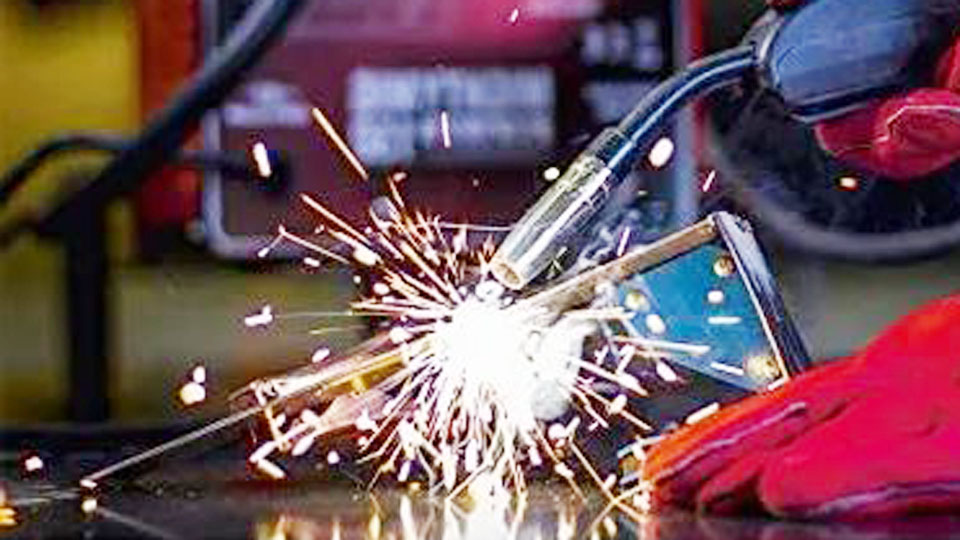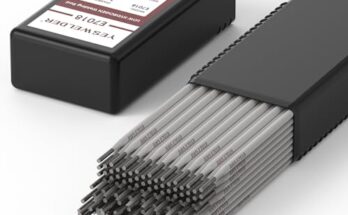When I first started welding, I wanted something simple, affordable, and easy to learn. That’s when I came across no gas MIG welders, also known as flux-cored welders.
These machines seemed perfect for a beginner like me—no need for shielding gas, easy setup, and great for outdoor use.

Photos by hankintech
If you’re new to welding and looking for a beginner-friendly option, a no gas MIG welder might be exactly what you need.
Unlike traditional MIG welders that require a gas tank, these welders use flux-cored wire, which creates its own shielding as it melts. This means you can weld without worrying about wind, extra equipment, or complicated setups.
I’ll walk you through everything you need to know about using a no gas MIG welder, including how it works, what you need to get started, and the best tips for getting clean, strong welds as a beginner.
No Gas MIG Welder
A no gas MIG welder is a type of flux-cored arc welding (FCAW) machine that doesn’t require an external gas supply.
It uses flux-cored wire, which has a special coating that creates a protective gas shield when it burns. This prevents oxidation and contamination, allowing you to weld without bottled gas.
These welders are popular among beginners because they are:
- Easy to use – No need to worry about gas flow or regulators.
- More affordable – No extra cost for gas tanks and refills.
- Great for outdoor welding – Works well even in windy conditions.
- Portable – Lighter and easier to carry around than gas MIG setups.
If you’re just starting, a no gas MIG welder is a great entry-level machine that allows you to learn the basics of welding without a complicated setup.
How Does a No Gas MIG Welder Work?
Instead of using an external shielding gas like argon or CO2, a flux-cored wire melts and releases gases that form a protective barrier around the weld. This prevents contamination and creates a strong, durable weld.
Here’s how it works:
- The flux-cored wire is continuously fed into the welding arc.
- As it melts, the flux inside the wire produces a shielding effect, preventing oxidation.
- The molten metal solidifies, forming the weld bead.
- A layer of slag forms on top of the weld, which needs to be chipped off after welding.
This process is simpler than traditional MIG welding because you don’t need to worry about gas flow settings, gas leaks, or windy conditions affecting the weld quality.
What Do You Need to Start Welding Without Gas?
Getting started with a no gas MIG welder is simple, but you need the right equipment to ensure a smooth and safe experience.
A No Gas MIG Welder
Look for a flux-cored capable MIG welder that operates on 110V or 220V, depending on your power availability. Beginners often start with 110V machines since they plug into standard household outlets.
Flux-Cored Wire
Choose the right wire type and size based on your welding needs.
- .030” (0.8mm) wire – Best for thin metals and general use.
- .035” (0.9mm) wire – Good for slightly thicker materials.
- .045” (1.2mm) wire – Used for heavy-duty applications.
The most common flux-cored wire is E71T-11, which works well for mild steel and is great for beginners.
Welding Helmet and Safety Gear
Never weld without proper protection. A good auto-darkening helmet, gloves, and flame-resistant clothing will keep you safe from sparks, UV rays, and heat.
Wire Brush and Chipping Hammer
Since flux-cored welding produces slag, you’ll need to chip it off and clean your welds with a wire brush for a smooth finish.
Best Techniques for Using a No Gas MIG Welder
Even though flux-cored welding is beginner-friendly, following the right techniques will improve your weld quality and strength.
Clean Your Metal Before Welding
- Use a wire brush or grinder to remove rust, paint, or dirt.
- Wipe with acetone or a degreaser if the metal is oily.
- Clean metal = stronger welds!
Use the Correct Polarity
- Set your welder to DC Electrode Negative (DCEN).
- This helps the flux-cored wire perform correctly.
Control Your Travel Speed
- Too slow = Too much heat, causing burn-through and excessive spatter.
- Too fast = Weak welds with poor penetration.
- Keep a steady pace to ensure even fusion.
Maintain the Right Stick-Out Distance
- Keep the wire stick-out around ½ inch for best results.
- Too short = excessive spatter.
- Too long = weak arc and poor weld quality.
Use a Dragging Technique
- Hold the gun at a 10-15° drag angle.
- Pushing the weld may lead to poor penetration and weak beads.
Common Mistakes Beginners Make (And How to Fix Them)
Even with a no gas MIG welder, beginners often run into common issues. Here’s how to fix them.
| Problem | Cause | Solution |
|---|---|---|
| Excessive spatter | Voltage too high or wire speed too low | Adjust settings and keep a steady hand |
| Weak welds | Travel speed too fast | Slow down and ensure good penetration |
| Porosity (holes in weld) | Dirty metal or excessive stick-out | Clean metal and maintain ½” stick-out |
| Wire feed problems | Incorrect tension or liner issues | Adjust tension and check wire feed path |
| Slag inclusion | Not cleaning between passes | Always chip and brush between welds |
Following these troubleshooting tips will help you get stronger, cleaner welds and improve your overall welding skills.
Pros and Cons of Using a No Gas MIG Welder
Like any welding method, flux-cored no gas MIG welding has advantages and disadvantages.
Pros
- No need for expensive shielding gas.
- Works great outdoors, even in windy conditions.
- Easier setup and portability.
- Stronger penetration on thicker metals.
Cons
- Produces more spatter and slag, requiring extra cleanup.
- Not as clean as gas-shielded MIG welding.
- Limited for thin metals, as it can easily burn through.
If you want a simple, budget-friendly, and easy-to-learn welding option, a no gas MIG welder is a great choice for beginners.
Conclusion
If you’re new to welding and looking for an easy way to get started, a no gas MIG welder is one of the best options. It eliminates the need for expensive gas setups, allows for outdoor welding, and is beginner-friendly.
By using flux-cored wire, you can weld mild steel, repair projects, and DIY metalwork without worrying about shielding gas. Just remember to clean your metal, use the correct settings, and practice your technique for the best results.
Welding takes time and patience, but with a no gas MIG welder, you can learn the basics quickly and build confidence.
If you’re working in your garage, fixing metal projects, or just experimenting, this method is a great place to start!
FAQs
Is a no gas MIG welder good for beginners?
Yes, it’s one of the easiest welding methods to learn since it doesn’t require shielding gas or complicated setups.
Can I weld aluminum with a no gas MIG welder?
No, flux-cored welding is mainly for mild steel. Aluminum requires MIG or TIG welding with gas.
Why is my flux core weld so messy?
Flux core welding produces slag and spatter. Always chip off the slag and brush your welds clean.
What’s the best flux core wire for beginners?
E71T-11 wire is the most common and easiest to use for mild steel welding.
Can I use a no gas MIG welder indoors?
Yes, but make sure you have good ventilation since it produces fumes and smoke.





